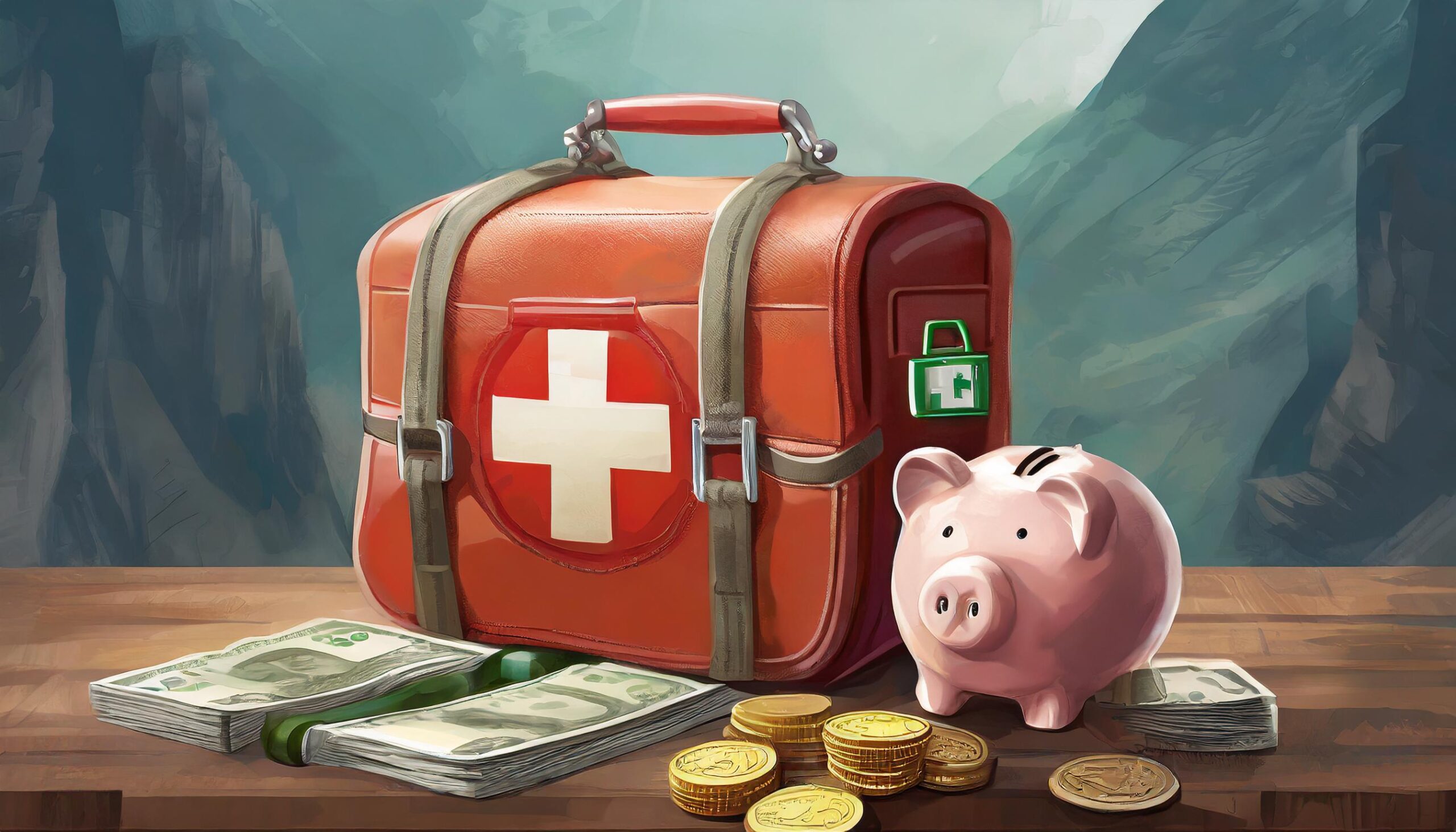Life is full of surprises, both pleasant and challenging. While we often hope for the best, it’s essential to prepare for the unexpected. That’s where emergency funds come in. An emergency fund acts as a financial safety net, providing peace of mind and stability during times of uncertainty. In this guide, we’ll explore the importance of having an emergency fund, discuss how to determine the right amount to save, and outline practical strategies for building and maintaining your emergency fund.
Why You Need an Emergency Fund
An emergency fund serves as a financial cushion to help you weather unexpected expenses or income disruptions without resorting to high-interest debt or depleting your savings. Here are several compelling reasons why having an emergency fund is essential:
1. Unforeseen Expenses: Life is unpredictable, and unexpected expenses can arise at any time. Whether it’s a medical emergency, car repair, home maintenance issue, or job loss, having an emergency fund ensures you’re prepared to handle these financial challenges without derailing your long-term financial goals.
2. Income Disruptions: Sudden job loss or a reduction in income can have a significant impact on your financial stability. An emergency fund provides a buffer to cover essential expenses such as rent or mortgage payments, utilities, groceries, and other necessities during periods of unemployment or underemployment.
3. Peace of Mind: Knowing you have a financial safety net in place can alleviate stress and anxiety related to unexpected financial setbacks. With an emergency fund, you can face life’s uncertainties with confidence, knowing you have the resources to handle whatever comes your way.
4. Avoiding High-Interest Debt: Without an emergency fund, individuals may be forced to rely on high-interest credit cards, payday loans, or other forms of debt to cover emergency expenses. This can lead to a cycle of debt and financial hardship, making it challenging to regain financial stability in the long run.
How to Determine the Right Amount for Your Emergency Fund
While the specific amount needed for an emergency fund varies depending on individual circumstances, there are several factors to consider when determining the appropriate size of your emergency fund:
1. Monthly Expenses: Start by calculating your monthly expenses, including rent or mortgage payments, utilities, groceries, transportation, insurance premiums, debt payments, and discretionary spending. Multiply your average monthly expenses by the number of months you’d like your emergency fund to cover, typically three to six months.
2. Income Stability: Assess the stability of your income and the likelihood of experiencing a financial emergency. Individuals with volatile income streams or job insecurity may need a larger emergency fund to account for potential income disruptions.
3. Lifestyle Considerations: Take into account your lifestyle and financial obligations when determining the size of your emergency fund. Individuals with dependents, homeownership, or significant financial responsibilities may need a larger emergency fund to cover unforeseen expenses or income fluctuations.
4. Risk Factors: Consider potential risk factors that could impact your financial stability, such as health issues, job insecurity, economic downturns, or natural disasters. A larger emergency fund can provide added protection against these risks and ensure you’re prepared for the unexpected.
Practical Strategies for Building Your Emergency Fund
Once you’ve determined the appropriate size for your emergency fund, it’s time to start building it. Here are some practical strategies to help you save for your emergency fund:
1. Set Clear Savings Goals: Establish specific, measurable, and achievable savings goals for your emergency fund. Break down your savings target into smaller milestones and track your progress regularly to stay motivated.
2. Create a Budget: Develop a comprehensive budget that outlines your income, expenses, and savings goals. Identify areas where you can reduce discretionary spending and reallocate those funds towards your emergency fund.
3. Automate Your Savings: Set up automatic transfers from your checking account to your emergency fund on a recurring basis, such as monthly or biweekly. Automating your savings ensures consistent contributions and removes the temptation to spend the money elsewhere.
4. Cut Expenses: Look for opportunities to trim unnecessary expenses and redirect those savings towards your emergency fund. Consider renegotiating bills, eliminating subscription services you don’t use, or finding more affordable alternatives for everyday purchases.
5. Increase Income: Explore ways to boost your income through additional sources of revenue, such as freelancing, part-time work, selling unused items, or pursuing side hustles. Supplementing your primary income can accelerate your progress towards building your emergency fund.
6. Use Windfalls Wisely: Put unexpected windfalls, such as tax refunds, bonuses, or monetary gifts, towards your emergency fund rather than splurging on non-essential purchases. Windfalls provide an excellent opportunity to make significant strides towards reaching your savings goals.
7. Prioritize High-Interest Debt: If you have outstanding high-interest debt, prioritize paying it off while simultaneously building your emergency fund. By reducing debt obligations, you free up more resources to allocate towards savings in the future.
8. Adjust as Needed: Review and adjust your savings goals periodically based on changes in your financial situation, lifestyle, and risk factors. Be flexible and adaptable in your approach to building and maintaining your emergency fund.
Maintaining Your Emergency Fund
Once you’ve established your emergency fund, it’s essential to maintain it over time and ensure it remains adequately funded. Here are some tips for maintaining your emergency fund:
1. Replenish After Withdrawals: If you need to tap into your emergency fund for unexpected expenses, make replenishing it a priority once your financial situation stabilizes. Aim to rebuild your emergency fund to its original target size as quickly as possible.
2. Regularly Review Expenses: Periodically review your expenses and identify opportunities to reduce costs or reallocate funds towards your emergency fund. Staying vigilant about your spending habits can help ensure your emergency fund remains fully funded.
3. Monitor Your Progress: Track your progress towards your savings goals and celebrate milestones along the way. Regularly monitoring your emergency fund balance and savings contributions can help you stay motivated and committed to your financial goals.
4. Reevaluate Your Needs: As your financial situation evolves, reassess your emergency fund needs and adjust your savings goals accordingly. Life changes such as marriage, parenthood, career advancements, or unexpected expenses may necessitate changes to your savings strategy.
5. Resist Temptation: Avoid the temptation to dip into your emergency fund for non-essential expenses or impulse purchases. Remember that your emergency fund is intended for genuine emergencies and should be reserved for that purpose.
Conclusion
An emergency fund is a foundational element of financial stability and preparedness, providing a safety net to protect against life’s uncertainties. By understanding the importance of having an emergency fund, determining the right amount to save, and implementing practical strategies for building and maintaining it, you can safeguard your financial well-being and achieve greater peace of mind. Start building your emergency fund today and take control of your financial future. Remember, it’s not a matter of if an emergency will occur, but when—and having an emergency fund in place ensures you’re ready to face whatever challenges life may bring.


Leave a Reply